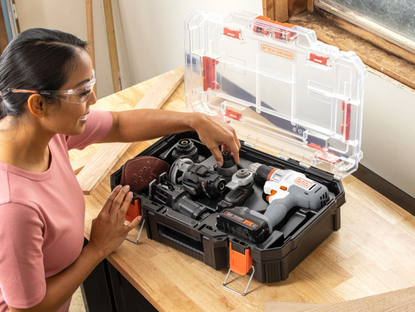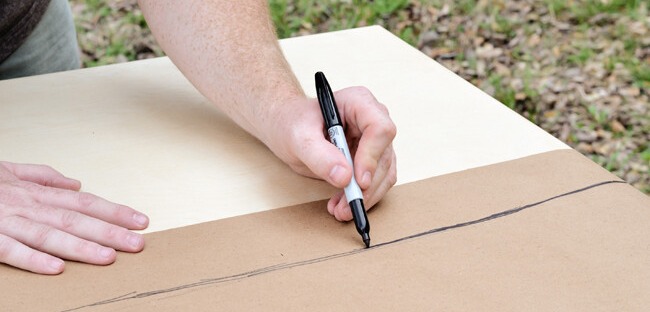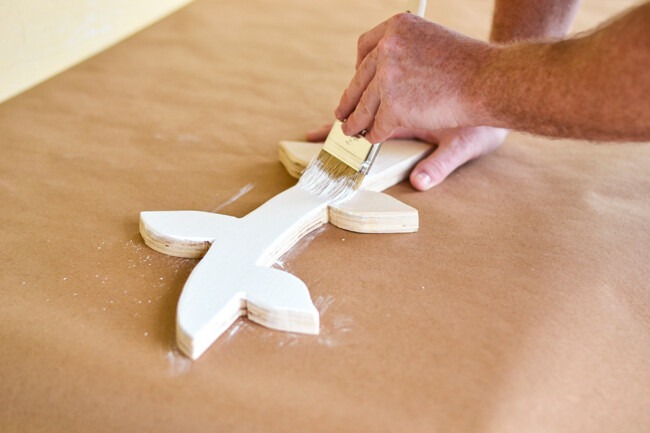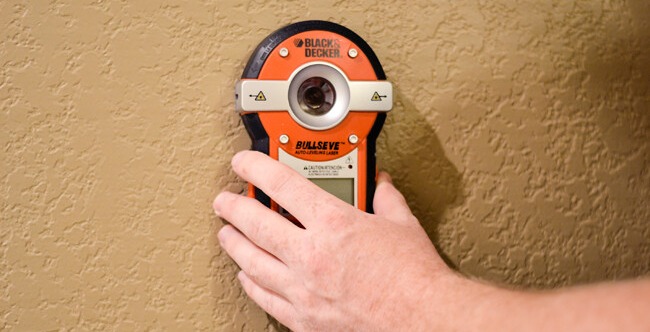DIY tree towel hanger
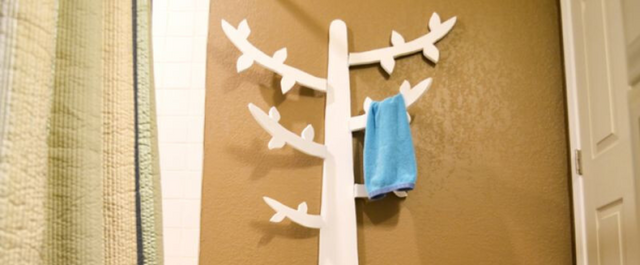
Skill Level: Intermediate | Estimated Time: 4 hours + dry time
Add creative but functional style to your bathroom with a tree towel hanger.
This clever design features branches that fold out when you need to hang up some towels. The same branches can be conveniently folded back when not in use.
Things You’ll Need

Step by Step Instructions
Step 1. Draw the Trunk + Branches
Draw the trunk on a large piece of butcher paper to create a full-size cutting template. Make the trunk about 6 to 8” wide at the base, tapering to about 1 to 3” at the top. It should be at least 5’ or taller. Draw six branches onto the paper. Cut out the trunk and branches with scissors to create your cutting templates.
Tips:
- The branches should graduate in length as you move up the tree, starting at about 18” at the bottom, to about 36” or more at the top, with approximately three leaves or secondary branches for each side (the design is up to you).
- Each branch must have a base that's parallel with the tree trunk and at least 2” wide to accommodate the hinge that joins the branch to the trunk.
Step 2. Cut the Plywood
Clamp the plywood to a worktable. Place your paper templates onto the plywood, and arrange them to minimize waste of your plywood. Apply a light spray adhesive to the plywood and secure the templates in place. Cut out the tree trunk and branches with the BLACK+DECKER 4.5 Amp Jigsaw, using the templates to guide your cuts.
Tip: If your blade tends to bind in corners, drill pilot holes with a 1/2” bit where the curve is the sharpest, providing room for the blade to pivot.
Step 3. Sand the Plywood
Peel off the templates. If they get stubborn, use a putty knife to scrape them off. Sand the pieces smoothly using the BLACK+DECKER MOUSE® Detail Sander and 120-grit sandpaper. Pay close attention to the edges, rounding them nicely. Fill defects or holes with plastic wood dough, using a putty knife.
Step 4. Apply the Paint
Using a paintbrush, apply polyurethane enamel paint on all sides and edges of every plywood piece. Allow the paint to dry, following the manufacturer’s recommended dry time. Add a second coat, if necessary.
Tip: Polyurethane enamel paint is best for coating surfaces that endure high traffic and humidity, such as in bathrooms. Enamels are available in numerous colors and several different sheens, or levels of glossiness. The higher the sheen, the more water-resistant and washable the painted surface will be.
Step 5. Mount the Trunk
Use the BLACK+DECKER BullsEye® Auto Leveling Laser with Stud Sensor to locate a wall stud in the area where you want to install the tree. Mark both side edges of the stud with a pencil so you can easily locate the stud's center. Confirm that there is no wiring in the installation area (no outlets or fixtures above or below and no switches to either side).
Position the trunk so it is centered over the stud. Fasten it to the stud at the top and bottom with 3” wood screws, using the BLACK+DECKER 12V MAX* Cordless Lithium Drill/Driver. Touch up the screw heads with a dab of paint.
Tip: One stud should be sufficient if you can get two screws in it to mount the trunk.
Step 6. Mount the Branches
Mount the branches to the tree trunk with 1 1/2 x 2” gate-style hinges, spacing the branches as desired. This type of hinge has two 3/4” wide leaves. Screw one hinge leaf to the side of the trunk, and screw the other leaf to the back of the branch with 1/2” screws.

Tip: If you don't want the branches to swing, but instead want them to be fixed at a right angle to the wall, use angle brackets instead of hinges.


